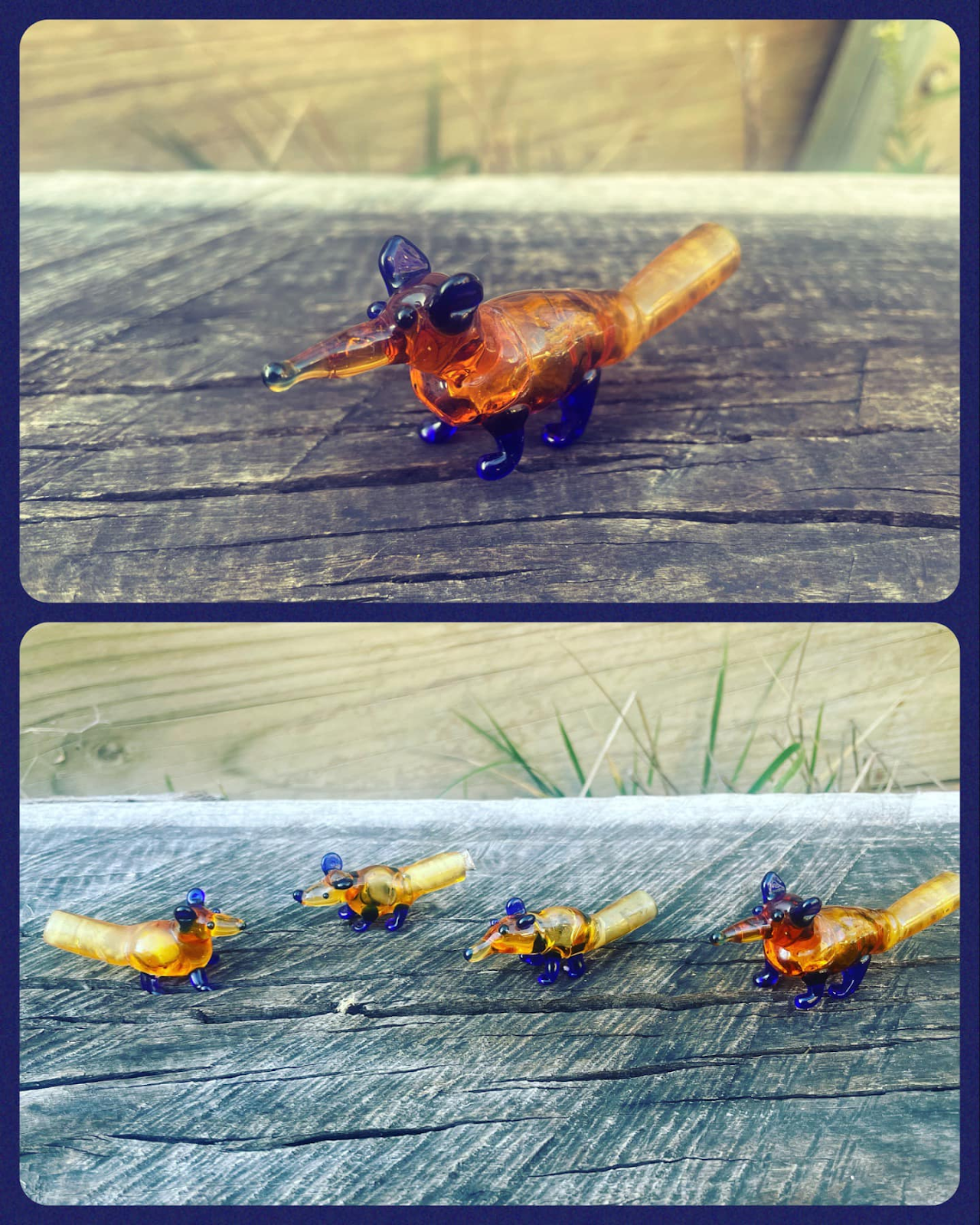|
What ? |
Roman mouse Overall H: 4.7 cm, L: 12.7 cm Also found in blue glass Glassblowing developed in the Syro-Palestinian
region in the early first century B.C. and is thought to have come to Rome
with craftsmen and slaves after the area’s annexation to the Roman world in
64 B.C. The new technology revolutionized the Italian glass industry, these
advantages spurred a rapid evolution of style and form, and experimentation
with the new technique led craftsmen to create novel and unique shapes;
examples exist of flasks and bottles shaped like foot sandals, wine barrels,
fruits, and even helmets and animals[i]
|
||
|
Where ? |
Rome |
||
|
When ? |
200-399 BCE |
||
|
Why ? |
LOOK HOW CUTE AND RANDOM IT IS. Also, I changed the mouse to
give it some slightly more rat like features so that it would fit the
category of “rat”. Unguentaria (tear bottles), and
other small vessels held various oils, perfumes, and cosmetics used by nearly
every member of Roman society.[ii] It holds a surprising amount of liquid. |
||
|
Evidence |
https://www.cmog.org/artwork/mouse PRIMARY DESCRIPTION: Very
pale brownish yellow, transparent glass, with pale blue streaks; blown,
applied. Animal with object in its mouth. Animal has spheroid head,
constriction at neck, slender pear-shaped body, and slightly upturned tubular
tail with open end, all blown from one pale yellow gather. Tip of tail has
plain rim with rounded lip. Yellow glass has many small bubbles, some of
which are elongated. Eyes, ears, nose, mouth and object carried in it, and legs
represented by blue blobs tooled to appropriate shapes: eyes are small
circular disks; ears are flat semicircles: mouth is single blob tooled to
form jaws, with excess glass pulled up to make nose and with two flattened
blobs of glass, one on top of other, in open mouth; all four limbs are blobs
that have been pinched and in three cases bent at ends to represent feet. Another similar artwork: https://www.metmuseum.org/art/collection/search/257875 |
||
|
Extra Details |
In the original the glass on
the “mouse’s” face is damaged. The museum says that is carrying something,
but it looks like glass that may have been squished when it was cooling down.
I chose to just make the nose more elongated to look like a rat’s nose. The technique uses
glassblowing, which I am new to. This involves blowing into a metal straw
that has been coated in bead release. This must be done very precisely
otherwise you make exploding glass bubbles. Which is fun. But probably high
on the danger scale. I made this a couple of times and learnt very quickly
how to manage my time and glass without having everything just shatter. The
only thing I would change on this version is the thickness of the tail, but
the thinner I go, the more chance of breaking. I will continue to practice
this. I was happy with the matching of glass colour, and the shape in
general, even though it took a while to get right. |



No comments:
Post a Comment